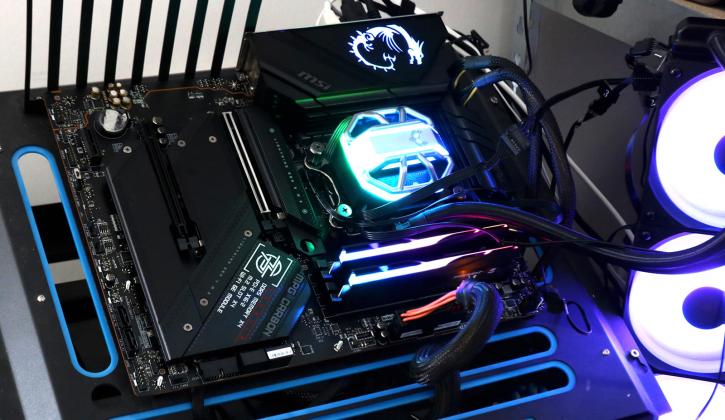Final Words & Conclusion
Final Words
A B650 motherboard will provide you with proper performance (as good as X670) and plenty of features, and it will undoubtedly be less expensive than any X670(E) motherboard available. The main distinction is the lack of PCIe Gen 5.0 on the PCIe slots and a slew of USB 3.2 connectivity. These are the most significant changes, aside from even excellent VRM designs. Ultimately, that difference will be minimal for you as a PC gamer; thus, we believe that B650 is the new mainstream, even high-end hardware motherboard series. We utilized a DDR5 6000 CL30 kit for this review (slightly crisper timing than the usual CL40). If you read our memory scaling article, it's almost annoying to see how close performance is compared to a DDR5 5200 MHz CL40 configuration). What a fun motherboard for the money, though! A lot can be said and stated about X670(E) versus B650(E), but for a B series motherboard, you'll get plenty of features as long as you do not plan to tweak your processor with, say, subzero cooling. BTW you can still tweak it, but with a different approach. The CARBON has a sophisticated power phase design, you could add in a Ryzen 7 7950X processor just as well and be done with it. So what will you be lacking with B650 then? Well, on some level tweaking support, most manufacturers will drop PCIe 5.0 support in favour of PCIe 4.0. So really, even with B650, you're 95% there for all your common needs and requirements. I mean sure, 5 M2 slots and multiple Ethernet links are nice, but do you really need it? The tradeoff can be nicer; this motherboard is expected to retail for just over 225 USD, pair it with a Ryzen 7 processor as shown today and you'll still be amazed by the performance. However, the caveat will be DDR5 memory; it's still somewhat expensive, making the platform overhaul too expensive.
Energy efficiency
Added chips, RGB, and BIOS configuration are a bothersome factor when testing stuff like this. The motherboard Ryzen 7000 performs a little out of the scope of our normal realm. Expect a 70-80 Watts power draw in IDLE. Under total stress on the processors, the system comes back at roughly 225-250 Watts. Energy efficiency for this motherboard and processors as such are average at best. Keep that in mind with your cooling choice, as processor wattage usually is 1:1 in line with cooling performance. For any Ryzen 7000 series processor, we recommend a proper LCS (all-in-one liquid cooling kit), but a good heatpipe cooler could also be functional (the processor can take the heat, we're not sure if you'd like the noise of the cooler fans though).
The conclusion
The MPG Carbon is easily one of my favourite motherboards. It packs all I would need, from quad NVMe (all heatsink cooled), then 6x SATA, proper USB 3.2 connections including one 3.2 2x2, proper DDR5 EXPO support, and an ecosystem that breathes PCIe Gen 4.0 with one NVMe SSD even PCIe Gen 5.0. This is all plenty, even at enthusiast levels by today's standards. The vast majority of budget-conscious do-it-yourselfers should consider the B650 chipset. Compared to the X670(E), it lacks Gen 5.0 graphics slots, and the number of IO (USB 3.2) is halved. In a nutshell that is it. With 16 power phases for the CPU there are no issues with processor support either, including the power subsystem's temperature. DDR4 memory is currently substantially less expensive than DDR5 memory; with a frequency of 5200 and timings of CL40 or lower you'll be there 98% also (compared over premium 6000 MHz kits). let me also add that this motherboard comes with WIFI 6E compatibility, so you're future-proof until WIFI7 arrives. MSI's MPG B650 Mortar WIFI is a worthy foundation for a high-performance work machine in its price range. Currently, it's priced at 225~250 USD/EUR. That's still a lot of money but far more value for money than anything with an X670 chipset. Overall, the platform felt stable and refined; we can't add anything else here because that is a fact. MSI has created an attractive product.
- Sign up to receive a notification when we publish a new article
- Or go back to Guru3D's front page.



